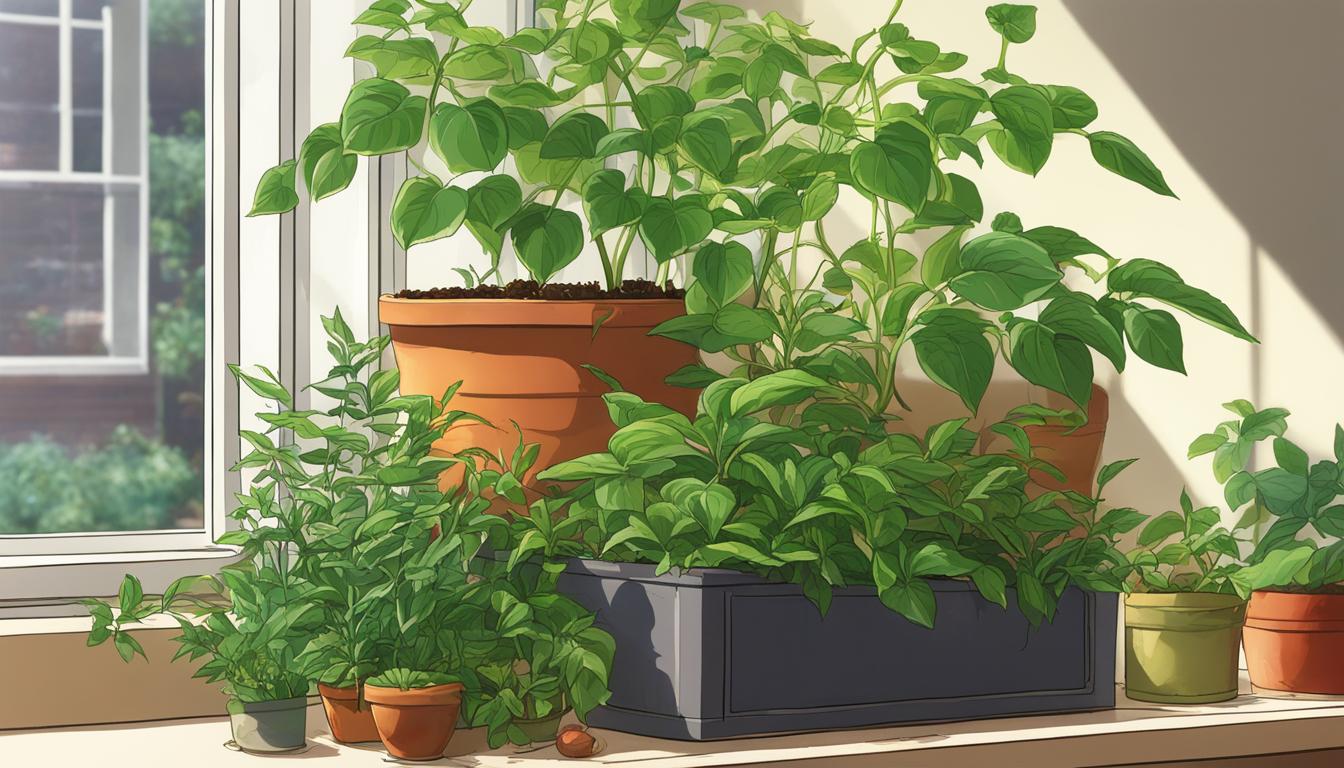
You can indeed grow medicinal plants in pots and containers, which offers the convenience of gardening in small spaces like balconies and patios.
Many medicinal herbs thrive in containers and can add beauty to your indoor or outdoor space while providing healing benefits.
Whether you choose to grow herbs for their medicinal properties, ornamental value, or both, there are specific tips and considerations to keep in mind for successful container gardening.
Key Takeaways:
- Container gardening allows for growing medicinal plants in small spaces like balconies and patios
- Many medicinal herbs thrive in containers and can provide healing benefits
- Consider the specific requirements of each plant for successful container gardening
- Choose the right-sized pot, use well-draining soil, and provide appropriate sunlight and water
- Popular medicinal plants for containers include Gotu Kola, Lemon Balm, and Turmeric
Benefits of Growing Medicinal Plants in Containers
There are several benefits to growing medicinal plants in containers. Firstly, it allows individuals with limited land or outdoor space to still enjoy the benefits of a medicinal herb garden.
Containers also provide greater control over the growing conditions, allowing you to create the ideal environment for each herb. They can also serve as decorative accents in your garden, adding texture, color, and variety.
Growing medicinal plants in containers makes them portable, meaning you can move them indoors during colder months or to more advantageous locations based on their specific sunlight and temperature requirements.
When growing medicinal plants in containers, one of the key advantages is the ability to garden in small spaces. This allows individuals living in apartments or urban areas to still have access to fresh medicinal herbs.
Containers also provide the flexibility to easily move your plants to different areas of your garden or even indoors, ensuring they receive the optimal sunlight and temperature conditions they require.
Another benefit of container gardening is the control it provides over the growing environment. Different medicinal plants have varying needs when it comes to sunlight, water, and soil conditions.
By growing them in containers, you can tailor these factors to suit each plant’s specific requirements, increasing the chances of successful growth and a higher yield of medicinal properties.
Furthermore, growing medicinal plants in containers offers an opportunity to add beauty and variety to your garden. Many medicinal herbs have attractive foliage and flowers, making them visually appealing additions to any outdoor space.
Containers can be arranged strategically to create an aesthetically pleasing display, enhancing the overall ambiance of your garden or patio.
Best Medicinal Plants for Container Gardening
When it comes to growing medicinal plants in pots and containers, there are several options that thrive in these environments. Here are some of the best medicinal plants for container gardening:
- Gotu Kola (Centella asiatica): Known for its cognitive and memory-enhancing properties.
- Spilanthes (Acmella oleracea): Used for its analgesic and immune-boosting effects.
- Aloe (Aloe vera): Known for its soothing and healing properties, commonly used for burns and skin conditions.
- Lemon Balm (Melissa officinalis): Has calming and stress-reducing effects.
- Tulsi (Ocimum sanctum): Known for its adaptogenic properties, helps the body cope with stress.
- Bay Laurel (Laurus nobilis): Has antimicrobial properties and is commonly used in cooking and herbal remedies.
- Bee Balm (Monarda fistulosa): Known for its antiseptic properties, commonly used to soothe sore throats.
- Turmeric (Curcuma longa): Has anti-inflammatory and antioxidant properties, commonly used in cooking and traditional medicine.
- Ginger (Zingiber officinale): Known for its digestive and anti-inflammatory properties.
These are just a few examples of the many medicinal plants that can thrive in containers. They offer a range of healing properties and add beauty to your indoor or outdoor space.
Table: Best Medicinal Plants for Container Gardening
| Plant | Main Medicinal Properties |
|---|---|
| Gotu Kola (Centella asiatica) | Cognitive enhancement, memory improvement |
| Spilanthes (Acmella oleracea) | Analgesic, immune-boosting |
| Aloe (Aloe vera) | Soothing, healing, burns, skin conditions |
| Lemon Balm (Melissa officinalis) | Calming, stress-reducing |
| Tulsi (Ocimum sanctum) | Adaptogenic, stress relief |
| Bay Laurel (Laurus nobilis) | Antimicrobial, culinary uses |
| Bee Balm (Monarda fistulosa) | Antiseptic, sore throat relief |
| Turmeric (Curcuma longa) | Anti-inflammatory, antioxidant, culinary uses |
| Ginger (Zingiber officinale) | Digestive, anti-inflammatory |
These plants have specific medicinal properties, and with the right care and growing conditions, they can thrive in container environments. Whether you’re looking to enhance your health or add a touch of nature to your home, growing medicinal plants in pots and containers is a rewarding endeavor.
Tips for Growing Medicinal Plants in Pots
Growing medicinal plants in pots can be a rewarding and convenient way to cultivate your own herbal remedies. To ensure success, there are a few important tips to keep in mind:
- Choose the right-sized pot: Each plant requires sufficient room for its roots to grow. Select pots that are large enough to accommodate the plant’s size and allow for proper drainage.
- Use well-draining soil mix: Opt for a quality potting mix specifically formulated for container gardening. This will promote healthy root development and prevent waterlogging.
- Provide adequate sunlight: Most medicinal plants thrive in bright, indirect sunlight. Place your pots in an area that receives at least six hours of sunlight per day, or use grow lights if natural light is limited.
- Water consistently: Regular watering is crucial for the health of your plants. Keep the soil moist, but avoid overwatering, as this can lead to root rot. Check the moisture level by inserting your finger into the soil – if it feels dry, it’s time to water.
- Fertilize as needed: Some medicinal plants benefit from regular feeding with organic plant food. Follow the instructions on the fertilizer package to avoid over-fertilization, which can harm the plants.
- Monitor for pests and diseases: Keep an eye out for common pests like aphids or spider mites, as well as signs of disease. Promptly address any issues to prevent them from spreading to other plants.
Following these tips will help you create a favorable growing environment for your medicinal plants in pots. With proper care and attention, you’ll be able to enjoy the benefits of your own homegrown herbal remedies.
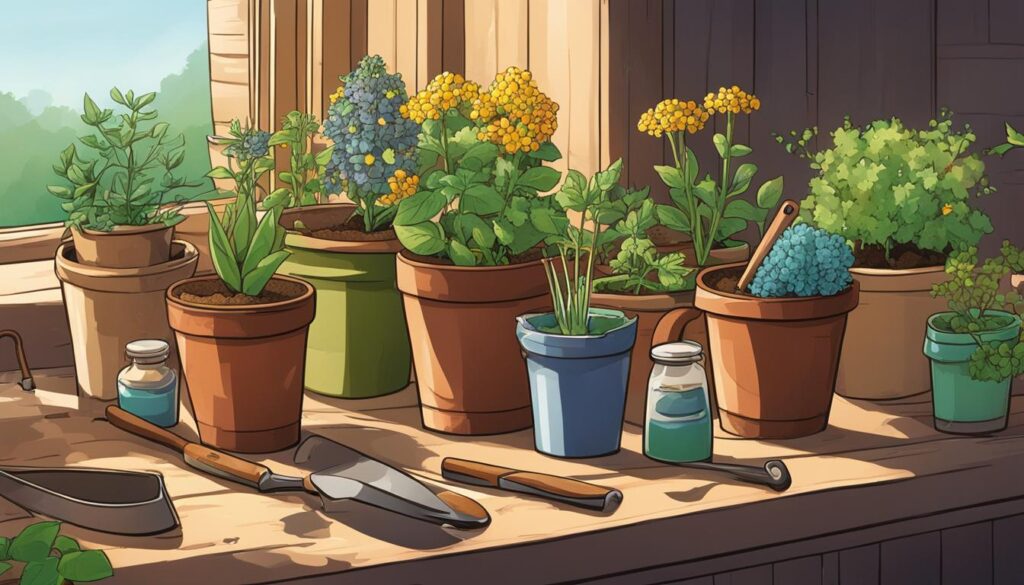
Recommended Medicinal Plants for Container Gardening
| Plant | Scientific Name | Common Uses |
|---|---|---|
| Lemon Balm | Melissa officinalis | Calming, digestive support |
| Peppermint | Mentha x piperita | Stomach soothing, headache relief |
| Lavender | Lavandula spp. | Relaxation, sleep aid |
| Chamomile | Matricaria chamomilla | Stress relief, digestive support |
| Echinacea | Echinacea purpurea | Immune system support |
Soil and Water Requirements for Medicinal Plants in Containers
When it comes to growing medicinal plants in containers, it is essential to provide the right soil and water conditions to ensure their optimal growth and health. The quality of the soil and the frequency of watering can significantly impact the overall well-being and productivity of the plants.
Soil Requirements
Medicinal plants in containers require well-draining soil to prevent waterlogging, which can lead to root rot. It is recommended to use a soil mix specifically designed for container gardening, preferably one that contains organic matter and nutrients.
This type of soil provides the necessary drainage while also retaining enough moisture for the plants’ needs. Using a high-quality soil mix will help create an optimal growing environment for your medicinal plants.
Watering Requirements
Proper watering is crucial for the success of medicinal plants in containers. While it is important to keep the soil moist, it is equally essential to avoid overwatering, as it can cause issues like fungal infections and root diseases.
The frequency of watering will depend on the specific plant and environmental conditions, so it is essential to monitor the moisture levels regularly. As a general guideline, water the plants when the top inch of soil feels dry to the touch. It is important to allow excess water to drain out of the container to prevent waterlogged roots.
| Medicinal Plant | Soil Requirements | Watering Requirements |
|---|---|---|
| Gotu Kola | Loamy, well-draining soil with good moisture retention | Keep the soil consistently moist but not waterlogged |
| Lemon Balm | Rich, well-draining soil with a slightly acidic pH | Water when the top inch of soil feels dry |
| Aloe Vera | Sandy or cactus mix soil with excellent drainage | Allow the soil to dry out between waterings |
By understanding and meeting the soil and water requirements of your medicinal plants, you can create an ideal growing environment that supports their health and vitality. Regularly monitor the moisture levels and adjust your watering routine accordingly to ensure the best possible conditions for your plants.
Sunlight and Temperature Considerations for Medicinal Plants in Containers
When growing medicinal plants in containers, it is essential to consider their specific sunlight and temperature requirements. Different plants have varying needs when it comes to light exposure, and providing the right amount of sunlight is crucial for their growth and overall health.
Some medicinal plants thrive in full sun, requiring at least six hours of direct sunlight per day, while others prefer partial shade or protection from intense afternoon sun. Researching the specific needs of each plant will help you determine the ideal light exposure for your container garden.
Temperature is another vital factor to consider when growing medicinal plants in containers. Some plants can tolerate a wide range of temperatures, while others are more sensitive and require additional protection during extreme weather conditions.
Understanding the temperature preferences of each plant will help you create the ideal growing environment. For example, certain plants may thrive in cooler temperatures, while others may require warmer conditions.
By monitoring and adjusting the temperature as needed, you can ensure optimal growth and maximize the medicinal properties of your plants.
Examples of Medicinal Plants and Their Sunlight and Temperature Preferences:
| Medicinal Plant | Sunlight Requirement | Temperature Preference |
|---|---|---|
| Lavender (Lavandula spp.) | Full sun | 60-85°F (15-29°C) |
| Peppermint (Mentha × piperita) | Partial shade to full sun | 65-85°F (18-29°C) |
| Echinacea (Echinacea purpurea) | Full sun to partial shade | 70-85°F (21-29°C) |
| Chamomile (Matricaria chamomilla) | Full sun to partial shade | 50-75°F (10-24°C) |
| Calendula (Calendula officinalis) | Full sun to partial shade | 55-75°F (13-24°C) |
By carefully considering the sunlight and temperature preferences of the medicinal plants you choose to grow in containers, you can create an optimal environment for their growth and ensure they thrive.
Remember to research each plant’s specific requirements and make any necessary adjustments to provide the ideal light exposure and temperature conditions. With the right care and attention, your container garden can yield a bountiful harvest of healthy and potent medicinal herbs.
Propagation and Harvesting of Medicinal Plants in Containers
Propagation and harvesting are essential aspects of growing medicinal plants in containers. Proper propagation techniques ensure the establishment of new plants, while harvesting at the right time maximizes the potency of their medicinal properties.
Understanding the specific requirements and methods for propagation and harvesting is crucial for successful container gardening with medicinal plants.
Propagation: Medicinal plants in containers can be propagated through various methods, including seed germination, stem cuttings, or division of root clumps. Each plant has its own recommended propagation method.
For example, some plants, like Aloe vera, can be propagated through offsets or pups that develop around the base of the parent plant. Other plants, such as Tulsi, can be started from seeds or stem cuttings.
It’s important to research and follow the appropriate propagation guidelines for each specific plant to ensure successful growth.
Harvesting: Harvesting medicinal plants at the right time is vital to obtain their maximum medicinal potency. The timing and method of harvesting can vary depending on the plant part used, such as leaves, flowers, or roots.
For instance, when harvesting leaves, it’s generally recommended to pick them before the plant flowers, as this is when the concentration of active compounds tends to be highest.
Roots are typically harvested in late fall or early spring when the energy of the plant is concentrated in the underground parts. It’s important to use clean, sharp tools for harvesting and handle the plants with care to minimize damage.
Table: Medicinal Plant Propagation Methods
| Medicinal Plant | Propagation Method |
|---|---|
| Gotu Kola | Division of root clumps |
| Spilanthes | Seed germination, stem cuttings |
| Aloe vera | Offsets or pups |
| Lemon Balm | Stem cuttings, division of root clumps |
| Tulsi | Seeds, stem cuttings |
By understanding the propagation methods specific to each medicinal plant, you can successfully expand your container garden and ensure a continuous supply of fresh herbs for medicinal purposes.
Similarly, following proper harvesting techniques will help preserve the potency and quality of the harvested plant material, allowing you to make the most of their healing properties.
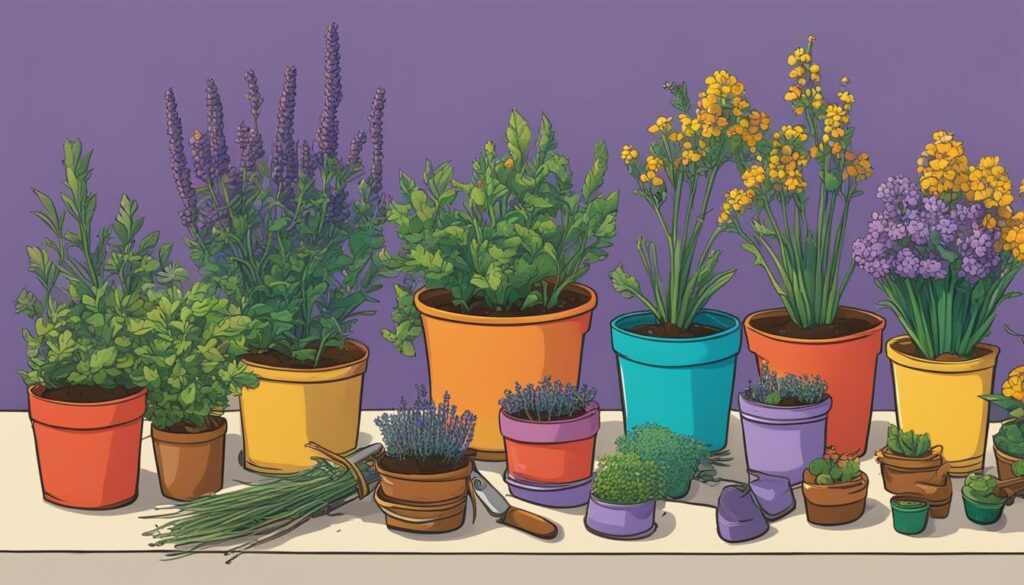
Safety Precautions and Considerations for Growing Medicinal Plants in Containers
Growing medicinal plants in containers can provide numerous benefits, but it’s important to take necessary safety precautions to ensure a safe and enjoyable gardening experience. Here are some key considerations:
Research and Consultation
Before selecting and growing any medicinal plant, it’s important to conduct thorough research to understand its properties, potential risks, and interactions with medications.
Some plants may have contraindications or may not be suitable for individuals with certain medical conditions. Consultation with a healthcare professional or a knowledgeable expert can provide valuable insights and guidance.
Identification and Labeling
Proper identification of medicinal plants is crucial to avoid any accidental ingestion of toxic or harmful substances. Use clear labels or plant markers to identify each plant, including its common and scientific names. This ensures that you can distinguish between different plants and their specific uses.
Safe Handling and Storage
When working with medicinal plants, it’s essential to handle them with care. Some plants may cause allergic reactions or skin irritation, so wearing gloves and protective clothing is recommended. Store any dried or processed medicinal plant parts in a cool, dry place away from direct sunlight to maintain their potency and prevent spoilage.
| Safety Precautions for Growing Medicinal Plants in Containers |
|---|
| Research the properties and potential risks of each medicinal plant before growing |
| Consult with a healthcare professional or expert for guidance |
| Properly label and identify each plant to avoid accidental ingestion |
| Handle plants with care, wearing protective clothing and gloves |
| Store dried or processed plant parts in a cool, dry place away from direct sunlight |
By following these safety precautions and considerations, you can enjoy the benefits of growing medicinal plants in containers while ensuring the health and well-being of yourself and others.
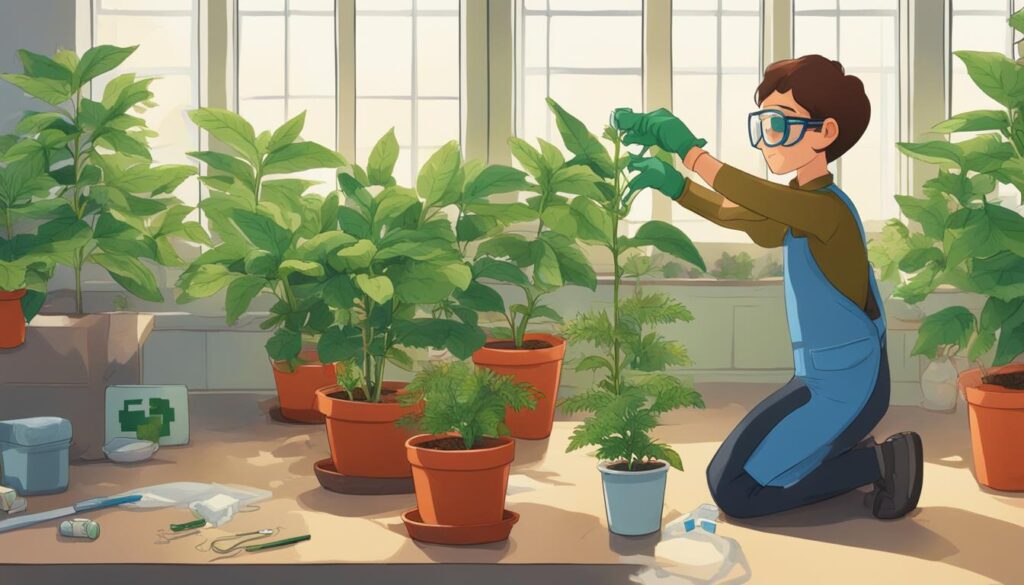
Growing medicinal plants in pots and containers is a practical and rewarding option for individuals with limited space or those who prefer the convenience of container gardening.
Whether you’re looking to enhance your health and well-being or simply add ornamental beauty to your living space, container gardening provides a versatile and accessible way to grow a diverse array of medicinal herbs.
By following the specific tips and considerations for container gardening, such as choosing the right-sized pots, using well-draining soil, providing appropriate sunlight exposure, and regular maintenance, you can successfully cultivate these plants and enjoy their healing benefits.
However, it’s important to keep safety precautions in mind when growing medicinal plants in containers. Some plants may have contraindications or interactions with medications, and certain plants may have toxic properties or cause allergic reactions.
It’s crucial to research and understand the potential risks associated with each plant and consult with a healthcare professional if necessary. Always follow the recommended guidelines for use and dosage, and handle and consume medicinal plants with caution.
FAQ
Can I grow medicinal plants in pots and containers?
Yes, you can grow medicinal plants in pots and containers. It offers the convenience of gardening in small spaces and allows you to cultivate a variety of medicinal herbs.
What are the benefits of growing medicinal plants in containers?
Growing medicinal plants in containers allows individuals with limited space to enjoy the benefits of a medicinal herb garden. It provides greater control over growing conditions, serves as decorative accents, and offers portability.
What are the best medicinal plants for container gardening?
Some popular choices for medicinal plants in containers include Gotu Kola, Spilanthes, Aloe, Lemon Balm, Tulsi, Bay Laurel, Bee Balm, Turmeric, and Ginger.
What are some tips for growing medicinal plants in pots?
Choose the right-sized pot, use well-draining soil mix, provide appropriate sunlight exposure, water regularly, fertilize as needed, monitor for pests and diseases, and prune or harvest regularly for new growth and potency.
What are the soil and water requirements for medicinal plants in containers?
Use well-draining soil mix specifically designed for containers and water the plants regularly, keeping the soil moist but not waterlogged.
What should I consider for sunlight and temperature requirements?
Different medicinal plants have varying sunlight and temperature preferences. Some prefer full sun, while others thrive in partial shade. Adjust the light exposure and protect plants from extreme temperatures accordingly.
How can I propagate and harvest medicinal plants in containers?
Medicinal plants can be propagated through various methods, depending on the specific plant. Harvesting should be done at the appropriate time for each plant part, using clean tools and handling with care.
Are there any safety precautions for growing medicinal plants in containers?
It’s important to consult with a healthcare professional before using any medicinal plant, as some may have contraindications or interactions with certain medications. Additionally, research potential risks and handle and consume with caution.
Can I grow medicinal plants in containers even with limited space?
Yes, growing medicinal plants in containers is a viable option for individuals with limited space or those who prefer the convenience of container gardening.

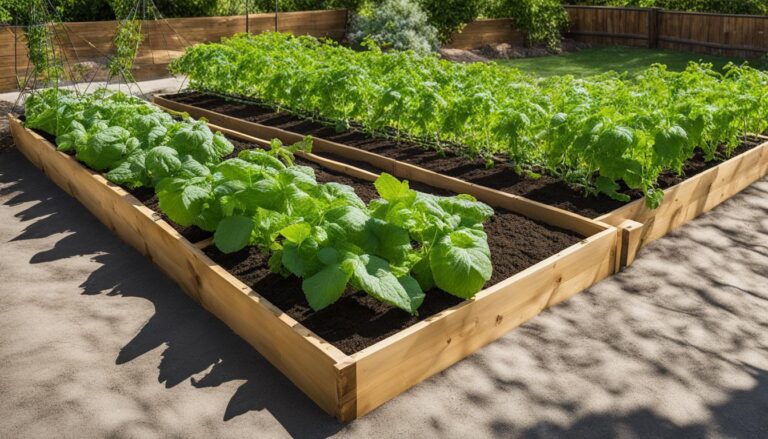
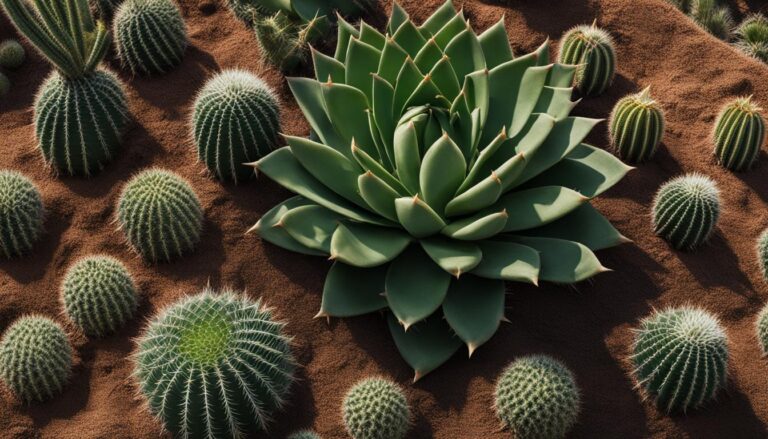
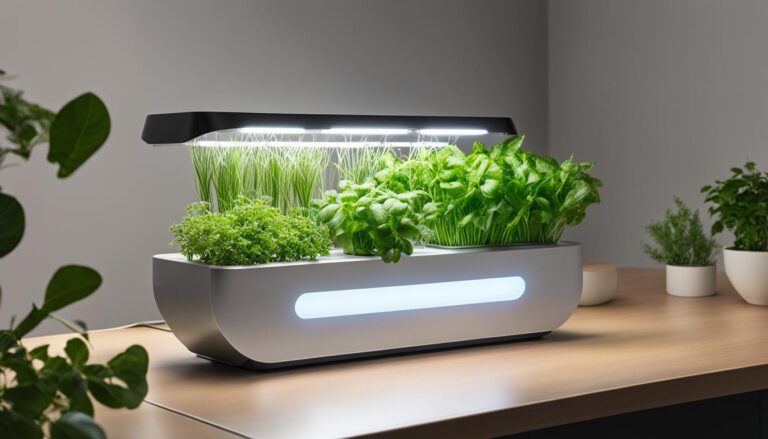
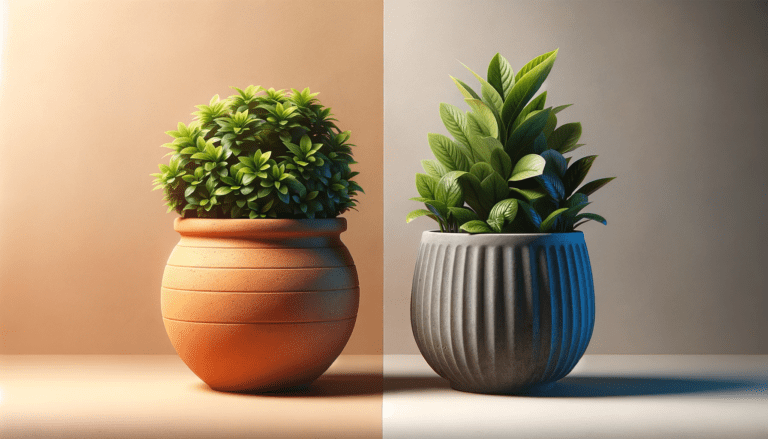

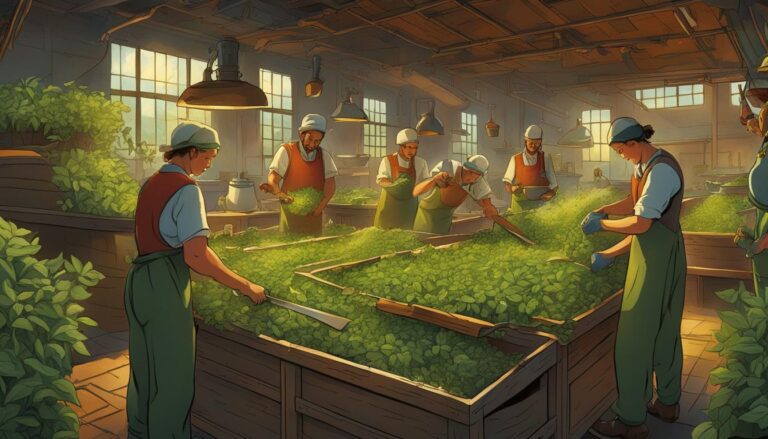
2 Comments